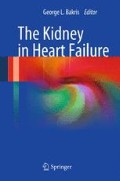Abstract
Although statins and LDL-C reduction reduce CV events, there remains a significant residual risk for events in both primary and secondary prevention populations, especially in patients with metabolic syndrome, diabetes, or renal impairment. The advent of novel biomarkers, advanced lipid testing, and platelet reactivity has the potential to identify and treat these high-risk patients. The integration of biomarkers for the early detection and the extent of myocardial necrosis, genomic testing, and platelet function assessment to measure improper response to antiplatelet therapy and inflammatory markers with advanced lipid testing to identify inadequate antiatherosclerotic treatment may hopefully markedly reduce the cardiovascular morbidity associated with ACS.
Access this chapter
Tax calculation will be finalised at checkout
Purchases are for personal use only
References
Report of the National Cholesterol Education Program Expert Panel on Detection, Evaluation, and Treatment of High Blood Cholesterol in Adults. Arch Intern Med. 1988;148:36–69.
Expert Panel on Detection, Evaluation, and Treatment of High Blood Cholesterol in Adults: Third report of the national cholesterol education program (NCEP) expert panel on detection, evaluation, and treatment of high blood cholesterol in adults (adult treatment panel III) final report. Circulation. 2002;106:3143–421.
Robinson JG, Wang S, Smith BJ, Jacobson TA. Meta-analysis of the relationship between non-high-density lipoprotein cholesterol reduction and coronary heart disease risk. J Am Coll Cardiol. 2009;53:316–22.
Davidson MH, Maki KC, Pearson TA, et al. Results of the National Cholesterol Education Program (NCEP) evaluation project utilizing novel E-technology (NEPTUNE) II survey and implications for treatment under the recent NCEP Writing Group recommendations. Am J Cardiol. 2005;96:556–63.
Drexel H, Aczel S, Marte T, Vonbank A, Saely CH. Factors predicting cardiovascular events in statin-treated diabetic and non-diabetic patients with coronary atherosclerosis. Atherosclerosis. 2010;208:484–9.
Fioretto P, Dodson PM, Ziegler D, Rosenson RS. Residual microvascular risk in diabetes: unmet needs and future directions. Nat Rev Endocrinol. 2010;6:19–25.
Blake GJ, Ridker PM, Kuntz KM. Potential cost-effectiveness of C-reactive protein screening followed by targeted statin therapy for the primary prevention of cardiovascular disease among patients without overt hyperlipidemia. Am J Med. 2003;114:485–94.
Biasucci LM, Liuzzo G, Grillo RL, et al. Elevated levels of C-reactive protein at discharge in patients with unstable angina predict recurrent instability. Circulation. 1999;99:855–60.
Sachdeva A, Cannon CP, Deedwania PC, et al. Lipid levels in patients hospitalized with coronary artery disease: an analysis of 136,905 hospitalizations in Get With The Guidelines. Am Heart J. 2009;157:111–7.e2.
Daubert MA, Jeremias A. The utility of troponin measurement to detect myocardial infarction: review of the current findings. Vasc Health Risk Manag. 2010;6:691–9.
Dokainish H, Pillai M, Murphy SA, et al; TACTICS-TIMI-18 Investigators. Prognostic implications of elevated troponin in patients with suspected acute coronary syndrome but no critical epicardial coronary disease: a TACTICS-TIMI-18 substudy. J Am Coll Cardiol. 2005;45:19–24. Erratum in: J Am Coll Cardiol. 2005;45:1911
Palacol Roppolo L, Fitzgerald R, Dillow J, et al. A comparison of troponin T and troponin I as predictors of cardiac events in patients undergoing chronic dialysis at a Veteran’s Hospital: a pilot study. J Am Coll Cardiol. 1999;34:448–54.
Gurbel PA, Tantry US, Shuldiner AR, Kereiakes DJ. Genotyping: one piece of the puzzle to personalize antiplatelet therapy. J Am Coll Cardiol. 2010;56:112–6.
Damani SB, Topol EJ. The case for routine genotyping in dual-antiplatelet therapy. J Am Coll Cardiol. 2010;56:109–11.
Grubel PA, Tantry US. An initial experiment with personalized antiplatelet therapy: the GRAVITAS trial. JAMA. 2011;305:1136–7.
de Lemos JA, Morrow DA, Bentley JH, et al. The prognostic value of B-type natriuretic peptide in patients with acute coronary syndromes. N Engl J Med. 2001;345:1014–21.
Manenti ER, Bodanese LC, Camey SA, Polanczyk CA. Prognostic value of serum biomarkers in association with TIMI risk score for acute coronary syndromes. Clin Cardiol. 2006;29:405–10.
Ray KK, Cannon CP, Cairns R, et al, for the PROVE IT-TIMI 22 Investigators. Relationship between uncontrolled risk factors and c-reactive protein levels in patients receiving standard or intensive statin therapy for acute coronary syndromes in the PROVE IT-TIMI 22 trial. J Am Coll Cardiol. 2005;46:1417–24.
Ray KK, Cannon CP, Cairns R, et al. Prognostic utility of ApoB/AI, total cholesterol/HDL, non-HDL cholesterol, or hs-CRP as predictors of clinical risk in patients receiving statin therapy after acute coronary syndromes: results from PROVE IT–TIMI 22. Arterioscler Thromb Vasc Biol. 2009;29:424–30.
Braun LT, Davidson MH. Lp-PLA2: a new target for statin therapy. Curr Atheroscler Rep. 2010;12:29–33.
Zalewski A, Nelson JJ, Hegg L, Macphee C. Lp-PLA2: a new kid on the block. Clin Chem. 2006;52:1645–50.
Mudd JO, Borlaug BA, Johnston PV, et al. Beyond low-density lipoprotein cholesterol: defining the role of low-density lipoprotein heterogeneity in coronary artery disease. J Am Coll Cardiol. 2007;50:1735–41.
Author information
Authors and Affiliations
Corresponding author
Editor information
Editors and Affiliations
Rights and permissions
Copyright information
© 2012 Springer Science+Business Media New York
About this chapter
Cite this chapter
Davidson, D., Davidson, M.H. (2012). New Markers of Vascular Risk. In: Bakris, G. (eds) The Kidney in Heart Failure. Springer, Boston, MA. https://doi.org/10.1007/978-1-4614-3694-2_14
Download citation
DOI: https://doi.org/10.1007/978-1-4614-3694-2_14
Published:
Publisher Name: Springer, Boston, MA
Print ISBN: 978-1-4614-3693-5
Online ISBN: 978-1-4614-3694-2
eBook Packages: MedicineMedicine (R0)

